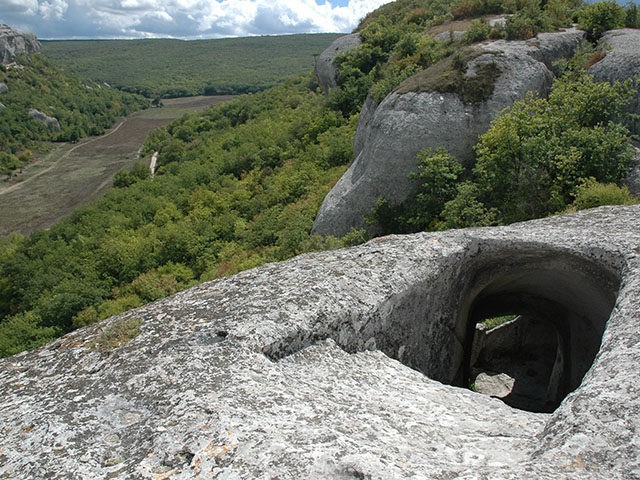Russian archaeologists have unearthed an ancient Christian church in southwest Crimea dating from the Byzantine era, a find that sheds light on notions of cities from that period.
The discovery was made among the ruins of the city of Eski-Kermen — meaning “old fortress” in Crimean Tatar — built by the Goths in the sixth century. The 21-acre cave city is located on a plateau, some 14 kilometers south of the city of Bakhchisarai.
“It is a unique Christian church dating from the 10th century and helps to have a clearer idea about the planning of the Crimean cities of the Byzantium era,” said Vadim Maiko, the director of the Crimean Archeology Institute (IAC).
Maiko also announced that among the ruins of the Greco-Scythian city of Kulchuk in the west of Crimea, archaeologists had discovered a round tower, which formed part of an ancient fortification system.
“An ancient, round tower, unique in its kind, has been discovered on the territory of the Kulchuk settlement,” Maiko said, adding that the building constitutes “a very interesting fortification object.”
Preliminary estimates suggest that the tower dates from the fourth or third century B.C.
In ancient times, the Roman and Byzantine empires encompassed extensive coastal areas of Crimea and a significant number of architectural monuments from those times have been preserved on the peninsula.

COMMENTS
Please let us know if you're having issues with commenting.